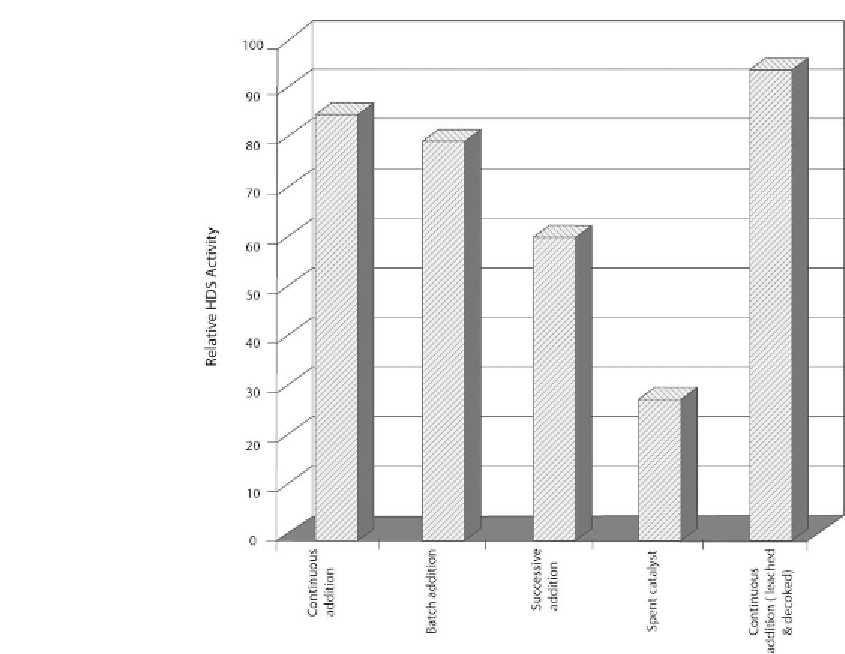Environmental Engineering Reference
In-Depth Information
Figure 7.8: Effect of different modes of promoter addition on hydrodesulfurization (HDS) activity
[From ref.
477
. Reprinted with permission].
activity was achieved using the continuous mode. The activity further increased to more than
90% after decoking. In contrast to the report by Clark et al.
[414]
, the rejuvenated catalyst only
lost about 5% of the side crushing strength compared with the fresh catalyst
[476]
.
Some evidence suggests that there are other Fe ions containing systems, i.e., the redox couple
such as Fe
2+
/Fe
3+
which when added to an organic acid, may enhance both leaching efficiency
and particularly the selectivity for V
[489]
. This was evident for oxalic acid in particular. For
example, without redox cycle in 1% oxalic acid, the removal of Mo and V was 34 and 48%,
respectively, whereas with redox cycle (10
−
2
M), it was 5 and 34%, respectively.
There might be some relation between rejuvenation and reactivation of spent catalysts. The
details of the latter were given in the patent disclosed by Eijsbouts et al.
[432]
. In this case,
after oxidative decoking under controlled conditions, the spent hydroprocessing catalyst is
impregnated with organic agents (e.g., glycols) dissolved in a solvent. Beneficial effects of








